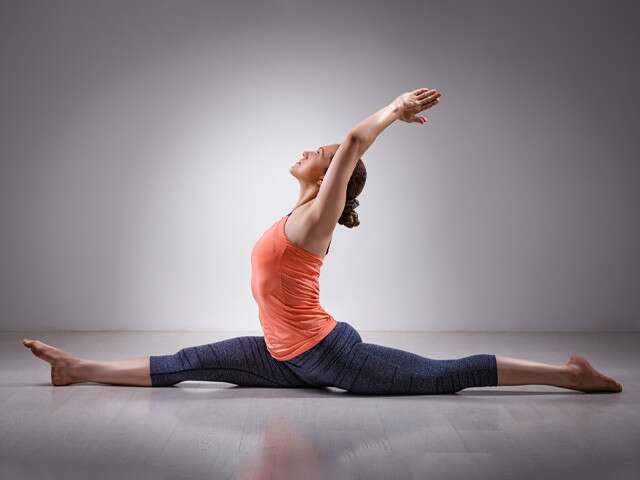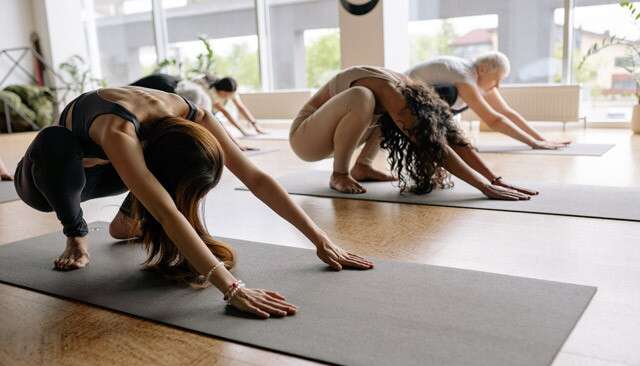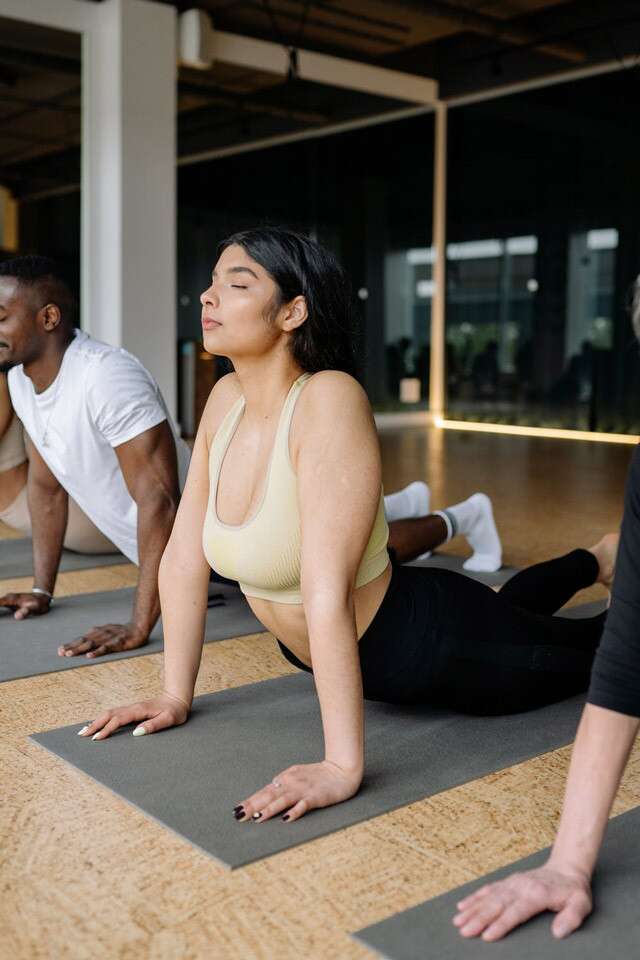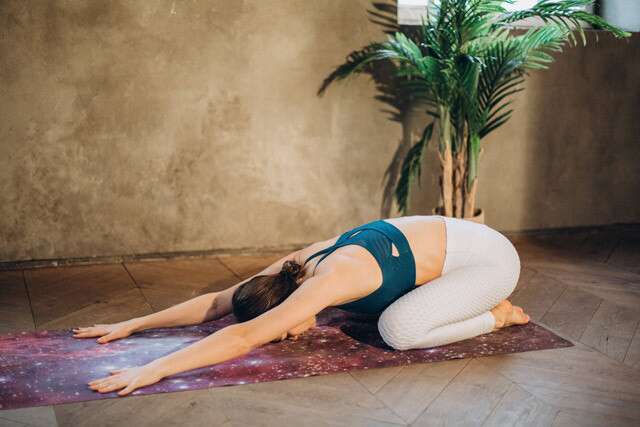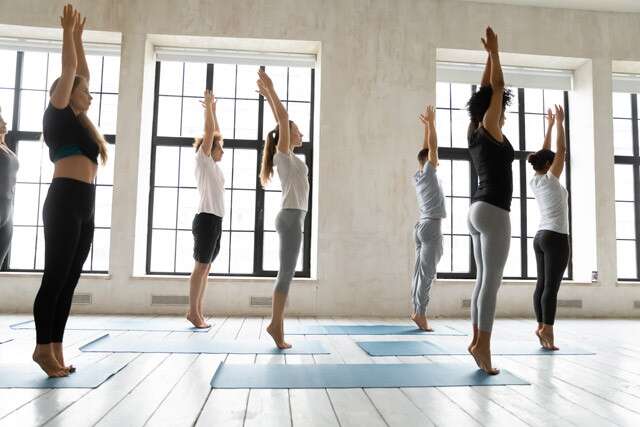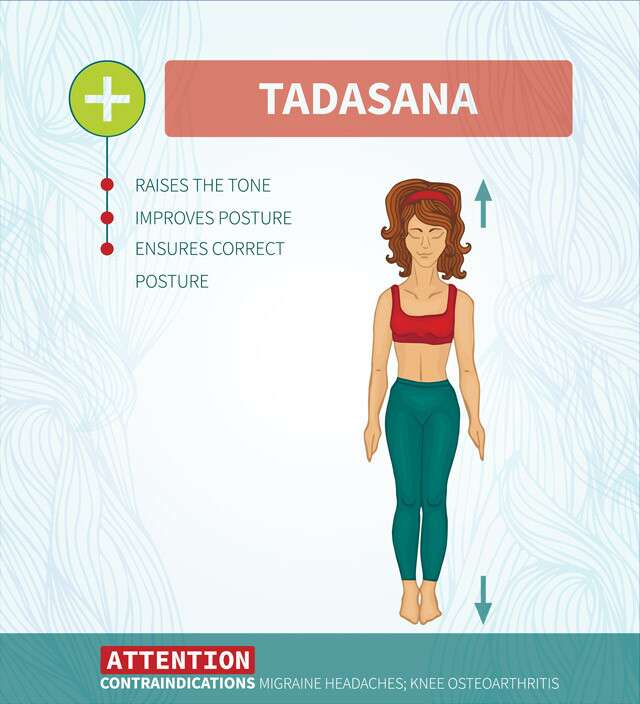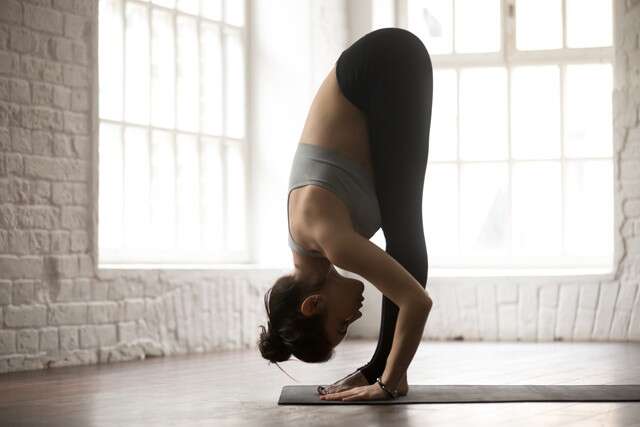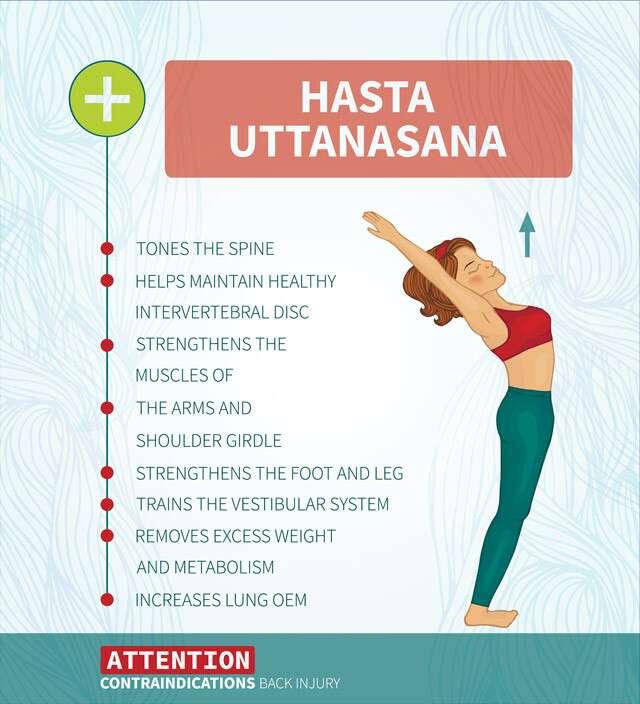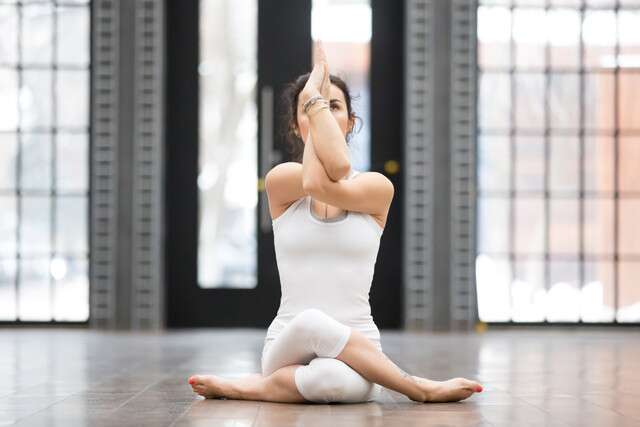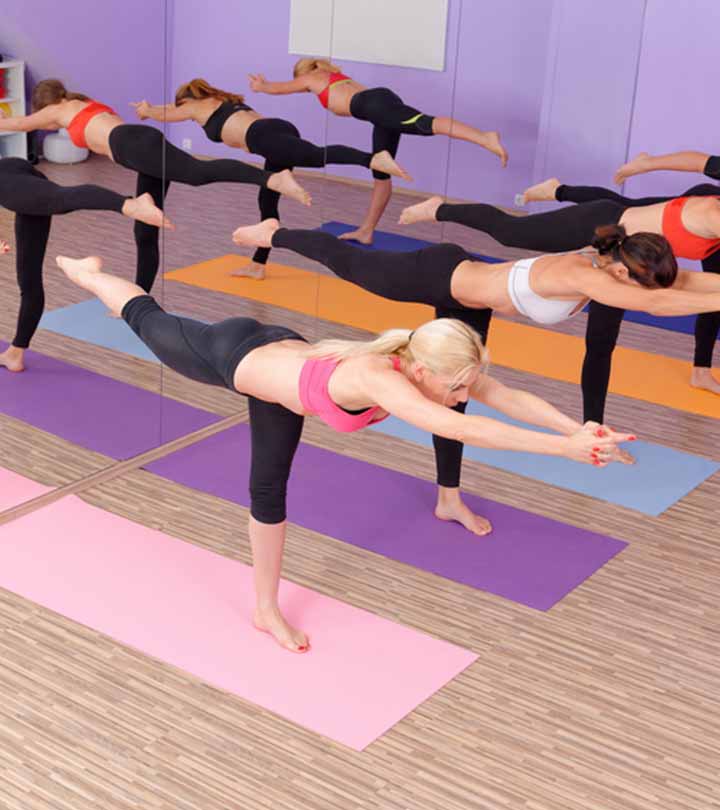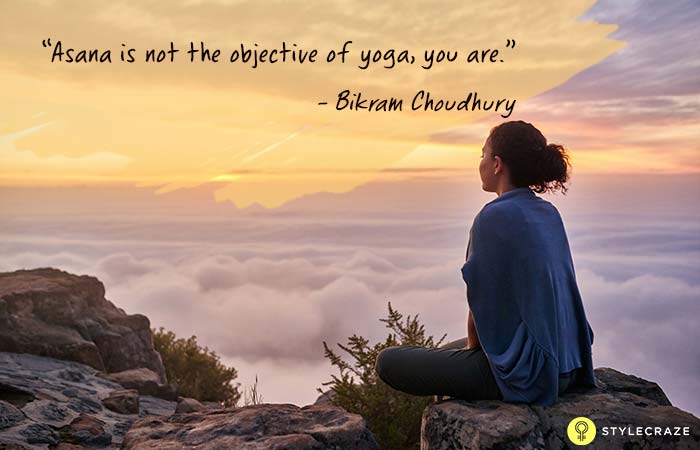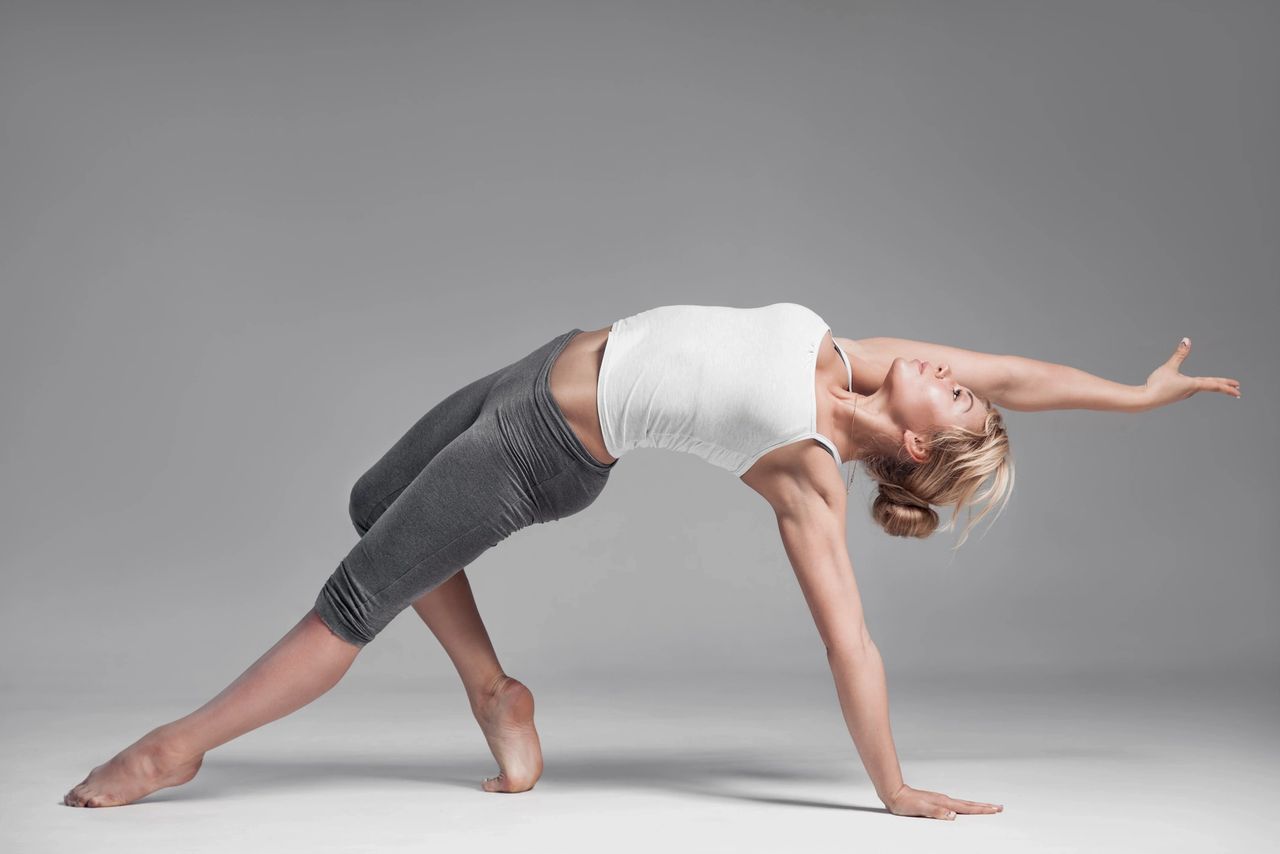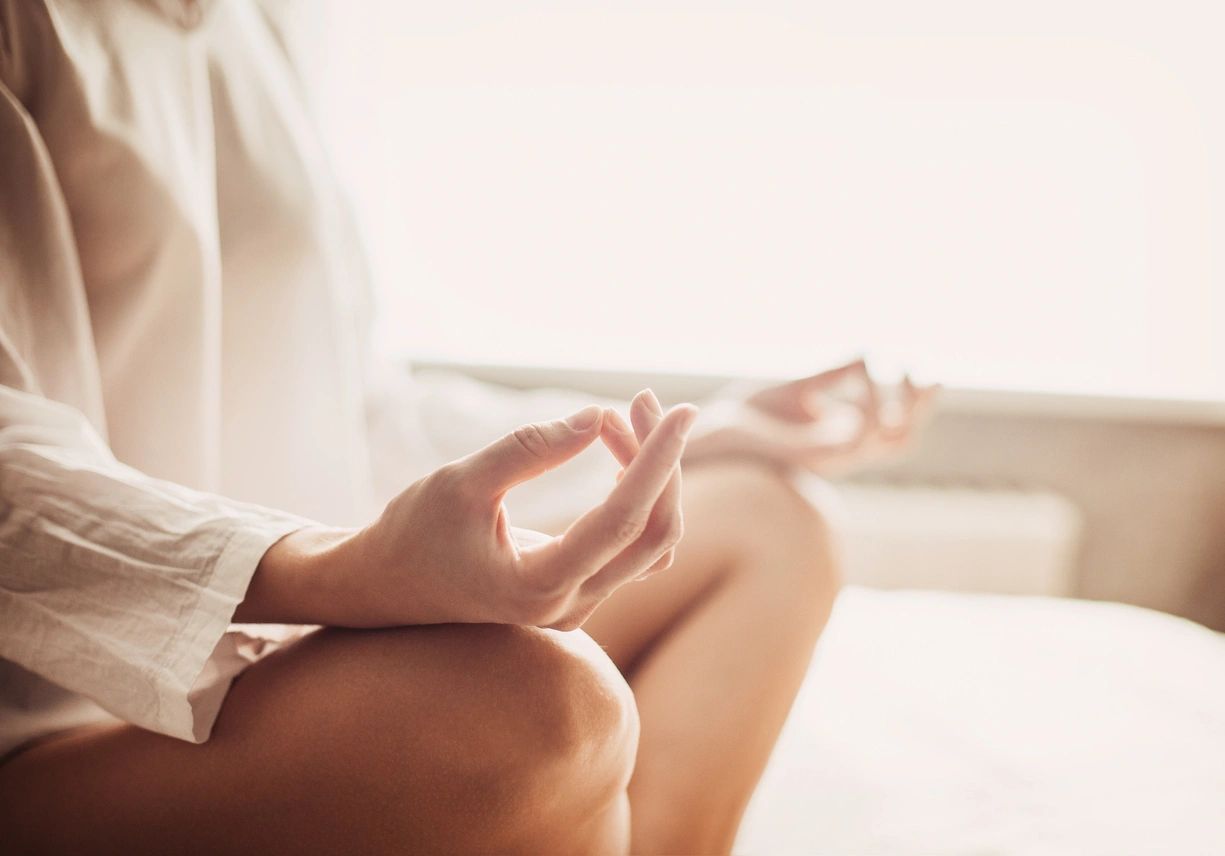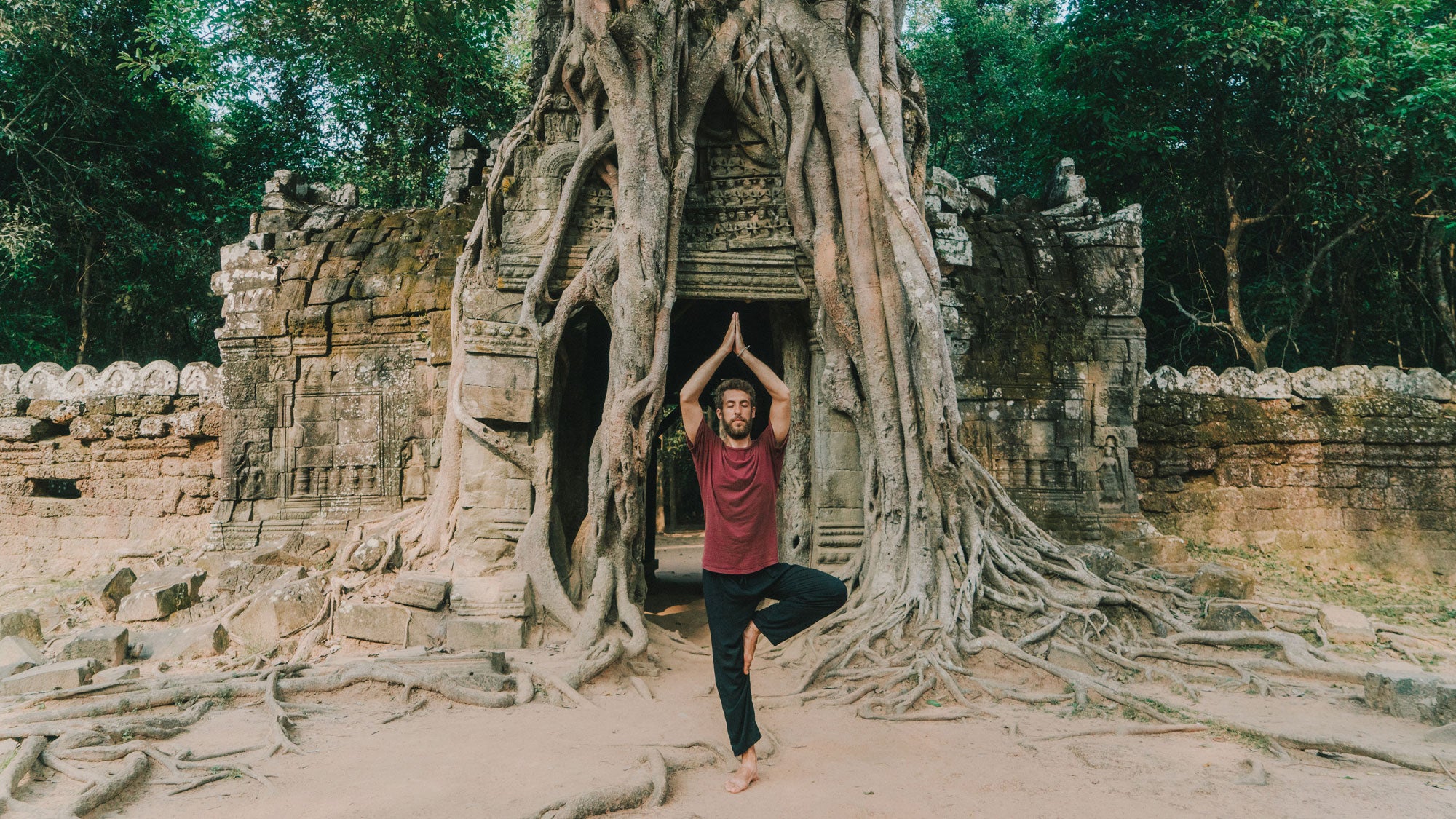
Four days a week, Nancy Seitz unrolls her yoga mat for a 90-minute asana practice in the Sivananda Yoga tradition. But her “yoga” doesn’t end when Savasana does. By ardently embracing some of yoga’s devotional practices, Seitz—a 55-year-old editor in Manhattan—has developed a sweet sense of connection with the Divine that permeates her entire life through Bhakti Yoga.
Each morning she practices a 30-minute devotional mantra meditation. Before she leaves for work, she repeats a mantra for safe passage. She offers gratitude before each meal. She attends a weekly arati (light) ceremony at her local Sivananda center.
At home she performs a puja ceremony at her altar—offering milk, rice, flowers, and water to Saraswati, the Hindu goddess of music, arts, and knowledge, as well as to other deities. She devotes her yoga practice to the spirit of the leader of the lineage she follows, the late Swami Sivananda.
“Bhakti just gives my practice a different dimension,” Seitz says. “It’s really hard in the day-to-day world to keep awareness and stay positive, and this awareness of the Divine helps.”
Like other modern yogis, Seitz has found bhakti yoga, known as the yoga of devotion, to be a lifesaver as she navigates a hectic modern existence.
What Does Bhakti Yoga Mean?
The Sanskrit word bhakti comes from the root bhaj, which means “to adore or worship God.” Bhakti yoga has been called “love for love’s sake” and “union through love and devotion.” Bhakti yoga, like any other form of yoga, is a path to self-realization, to having an experience of oneness with everything.
“Bhakti is the yoga of a personal relationship with God,” says musician Jai Uttal, who learned the art of devotion from his guru, the late Neem Karoli Baba. At the heart of bhakti is surrender, says Uttal, who lives in California but travels the globe leading kirtans and chanting workshops.
Yoga scholar David Frawley agrees. In his book, Yoga: The Greater Tradition, he writes that the ultimate expression of bhakti yoga is surrender to the Divine as one’s inner self. The path, he says, consists of concentrating one’s mind, emotions, and senses on the Divine.
Where to Practice Bhakti Yoga
As American yoga matures, interest in bhakti yoga has exploded. The Esalen Institute in Big Sur, California, holds an annual bhakti festival. Yoga Tree in San Francisco held the Bhakti Yoga Sunsplash, a celebration with music. And Bhakti Fest is another yoga festival worth attending.
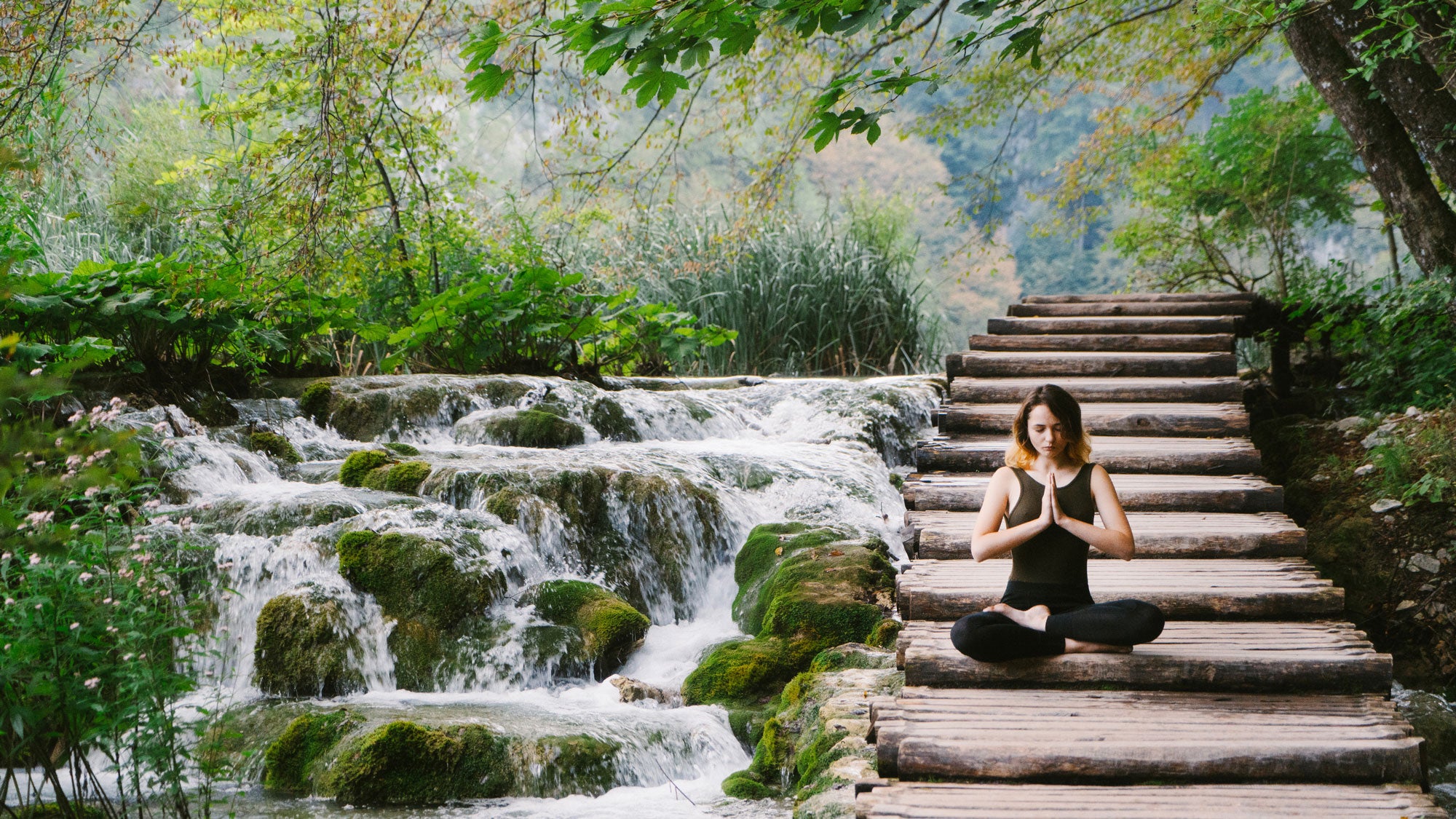
How Yogis Practice Bhakti Yoga Today
Today’s Western yogis don’t necessarily practice devotion to a Hindu deity, a guru, or “God” as a patriarchal figure in white robes (although some do). Many Westerners who practice bhakti yoga tend to connect with a more encompassing idea of the Divine, the Beloved, the Spirit, the Self, or the Source. As Uttal says, “Everyone has their own idea or feeling of what ‘God’ is.”
“For me, bhakti means whatever strikes your heart with beauty, whatever hits the mark of your heart and inspires you to just feel the love,” says Sianna Sherman, a senior Anusara Yoga teacher.
As you tap into this universal love, you naturally develop a sense of trust that this benevolent, wise universe provides; you relax; and you can’t help but generate positive energy for others.
Frawley calls bhakti “the sweetest of the yoga approaches” and says it is often more accessible than other forms of yoga, which may explain its growing popularity. ”
At first, American yoga was just a fitness thing,” says Carlos Pomeda, a yoga scholar in Austin, Texas. “But more and more we are seeing people discover this whole other world of love and devotion.”
A Brief History of Bhakti Yoga
In its purest form, bhakti burns like a devotional fire in the heart. An early and extreme example of a bhakti yogi comes from the 12th century, when a 10-year-old girl named Akka Mahadevi shunned childhood games and instead became a devotee of Shiva, the Hindu deity known as the aspect of destructive forces.
Mahadevi eventually married a local king. But she found that her overwhelming love for Shiva overshadowed mortal love. She rejected her husband and ran away. According to legend, she gave up all of the riches of the kingdom, leaving even her clothes behind, and used her long hair to cover her body. For the rest of her life, Mahadevi devoted herself to Shiva, singing his praises as she traveled blissfully around India as a wandering poet and saint.
Akka Mahadevi is part of the rich tradition of bhakti yoga, which, historically, is seen as a reaction to a more ascetic approach to self-realization. Five thousand years ago, yoga represented a spirit of struggle, a solitary pursuit of overcoming the body and mind. In his quest for enlightenment, the archetypal yogi gave up clothes in favor of a loincloth, shunned material possessions, and paid little heed to the body’s desire for food and sex. By renouncing all worldly pleasures, he sought to quiet his mind and know the Self.
But another idea was also brewing—one that emphasized the importance of channeling love toward God. The turning point in accepting this new path was the Bhagavad Gita, which was written somewhere between the third and second century BCE.
The Gita, often called a “love song to God,” expressed the idea that it’s possible to move toward the highest goal—that of spiritual realization—by developing a connection with the heart. “The Gita is the birthplace of bhakti yoga,” Pomeda says. “It was the first statement where you see bhakti as a separate—and complete—path.”
With this idea cracked wide open, yogis began to view devotion as a legitimate route to enlightenment. But the Gita doesn’t prescribe any specifics on the bhakti path. According to Pomeda, it would take several centuries for a systematic practice of bhakti yoga to solidify.
By the fifth century CE, the first devotional schools in the Shaiva tradition started to spring up in Southern India. These schools advocated devotion: worshiping and chanting mantra to deities like Shiva, Krishna, Vishnu, and Kali; singing devotional songs; following a guru; meditating on the Divine; reading and writing ecstatic poetry; and performing rituals like puja and arati ceremonies. The bhakti tradition emphasized the intense longing to know God, often called “the Beloved” in the poetry of the time.
In a beautiful way, bhakti yoga values love and tolerance, which was revolutionary in the conventional caste system of India. Traditionally, women stayed home and only upper-caste men undertook serious spiritual study. But texts show that everyone, of whatever gender or class, was welcome to embrace bhakti practices.
“Lower castes and women don’t show up much anywhere in the narratives of this time, but they do show up in the bhakti traditions in India,” Pomeda says. “This speaks to the democratic spirit of devotion, the universality of devotion.”
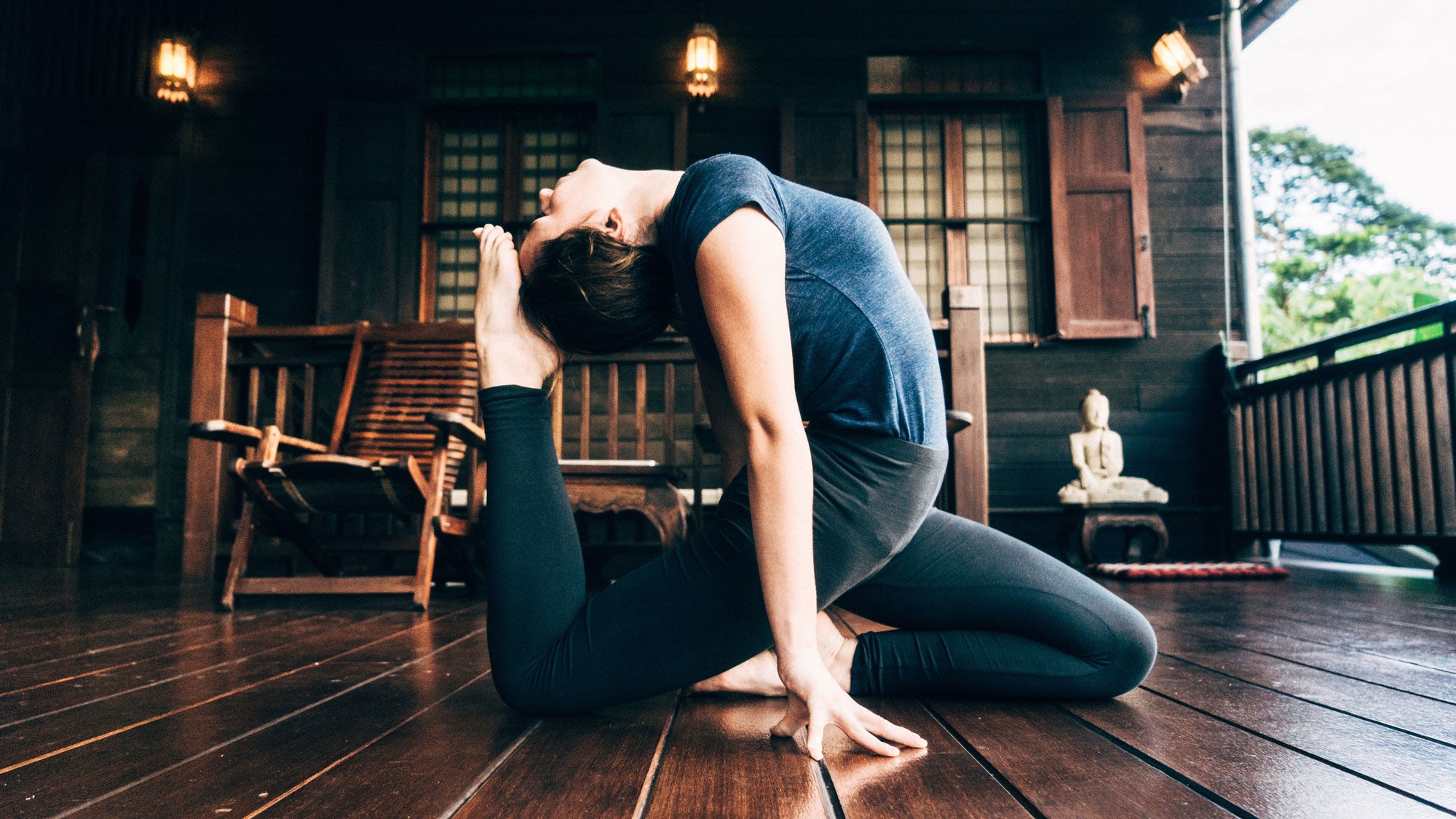
Bhakti Yoga is the Path of Devotion
Bhakti yoga is one of six systems of yoga revered throughout history as paths that can lead you to full awareness of your true nature. Other paths to self-realization are hatha yoga (transformation of the individual consciousness through a practice that begins in the body); jnana yoga (inner knowledge and insight); karma yoga (skill in action); kriya yoga (ritual action); and raja yoga (the eight-limbed path also known as the classical yoga of Patanjali). These paths aren’t mutually exclusive, although, for many, one path will resonate more deeply.
Ayurvedic physician, scholar, and author Robert Svoboda illuminates one way these systems overlap: He says that an asana practice (as part of hatha yoga) provides the opportunity to gather and direct the prana (life force) necessary to follow the rigorous path of a true bhakti yogi.
“Only when you have removed the obvious obstructions to the circulation of prana out of your kosha [bodily sheaths] will the prana [be able to circulate],” he says. “Then you can collect and refine it and get it down deep into your marrow.”
But while getting your prana circulating is a worthy goal, Svoboda thinks it’s not important—and potentially detrimental to the path of bhakti—to get caught up in complicated asana practice, which could deter you from the true goal of knowing your authentic Self.
Some Western yogis dabble in bhakti yoga through an occasional prayer or kirtan. But if you’re a serious practitioner looking to find union with the Divine, a more rigorous practice is in order.
Svoboda says the path of devotion involves total dedication and surrender. He doesn’t identify a person, deity, object, or idea to which bhakti yogis should devote themselves. Each individual needs to discover that through whatever process they believe in—a prayer to God or a request to the universe—to ask for guidance, he says.
“You need to say, ‘I desperately need to be guided, and I request guidance on what to do, whom to worship, how to worship, and when to do it. I am requesting your permanent direction in my life.’”
And you may need to do so repeatedly, Svoboda says, until you actually surrender, not just surrender superficially. He says that you need determination, patience, and a certain desperation to fully surrender to the bhakti path.
It sounds like a tall order for Westerners, but it’s certainly worth trying. “If you have an asana practice, do a little bhakti practice every day,” he advises. If it works for you, dedicate yourself to it; determination does pay off. “You have to decide that this path of devotion is what you’re going to do—[that] this is what is most important to you. Tell yourself that life is short, that death is inevitable. Tell yourself, ‘I don’t want to be where I am now when I die.’”
Who’s Your Guru or Your God?
Just as Akka Mahadevi devoted herself to Shiva, some modern bhaktis devote themselves to a specific deity. For example, Seitz feels guided by Saraswati and other deities in her creative work in the field of book publishing.
Still others devote themselves to a guru, living or dead. For practitioners of Integral Yoga, it is Swami Satchidananda; Sivananda yogis revere Swami Sivananda; Siddha Yoga members follow Gurumayi Chidvilasananda. Each of these traditions maintains ashrams or centers where followers gather to receive spiritual instruction and to come together for meditation and acts of worship such as puja ceremonies.
Some find having a guru essential to the bhakti path. Northern California yoga teacher Thomas Fortel was deeply involved in the Siddha Yoga tradition for two decades.
He says that his teacher, Gurumayi, made him feel safe enough to explore and surrender to God. Uttal says that his guru, Neem Karoli Baba, helped teach him that divine energy is in everyone. But both students bring a modern spin to the guru question. “In the end, it’s all about internalizing what I learned and making it my own,” Fortel says.
Uttal suggests that a Hindu guru is not essential. “I believe that everyone has a guru. That guru doesn’t necessarily take a human form, but if they need it, it’s there,” he says. “For me, bhakti takes a particular form: singing kirtan, playing music, and being married and being a daddy. I think my little boy is as much an expression of my bhakti practice as any mantra.”
But he hesitates to say that he can give a true definition of bhakti or say what the practice involves for anyone but himself. “One of the scary things about being asked the definition of bhakti is that it opens the door for me to think I know something. For me, one of the hugest parts of bhakti is remembering that I don’t know anything. Anything I do for my ego just brings more ego. All I can begin to do is offer everything to God.”
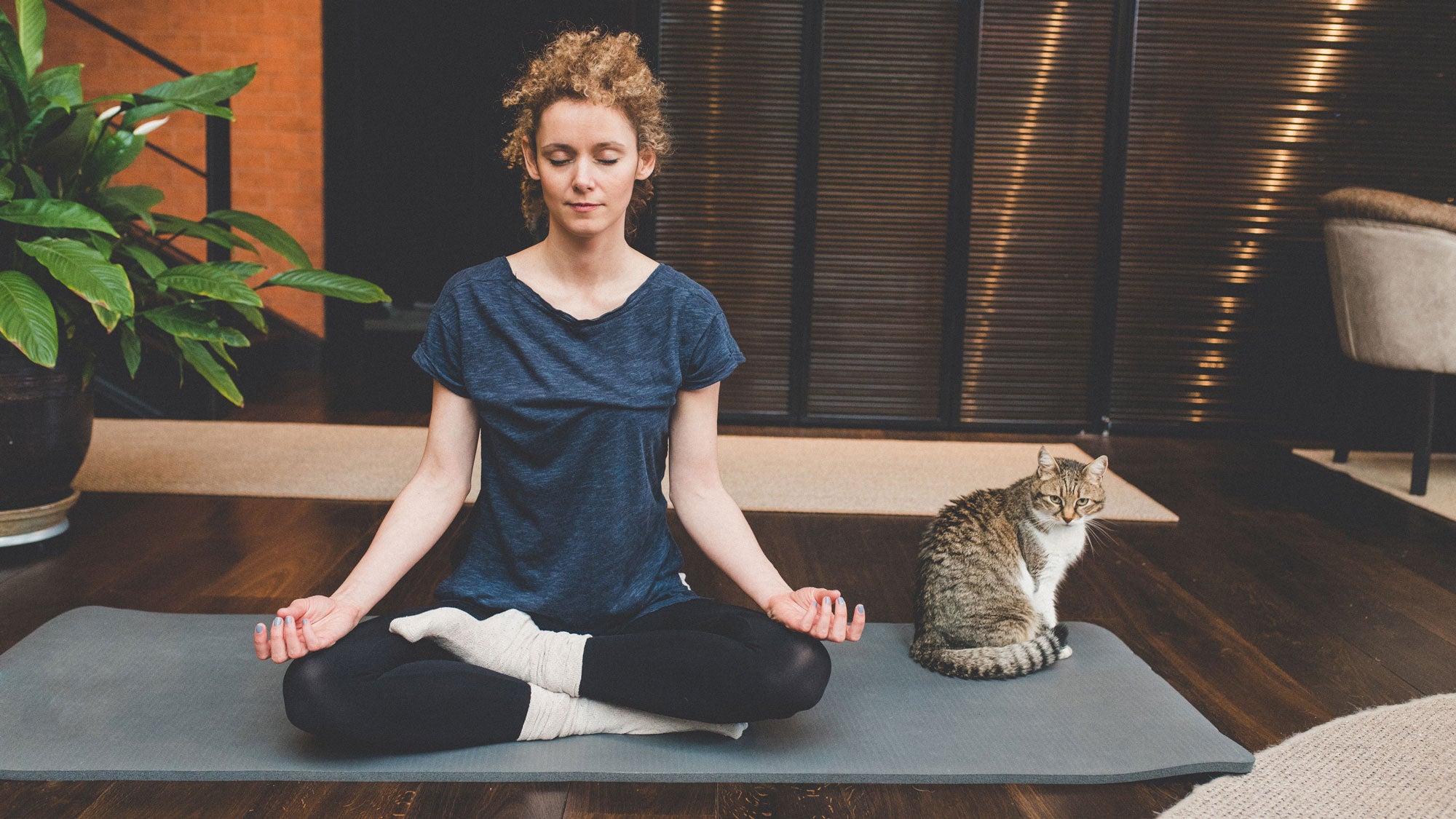
Broadening the Definition of “Bhakti Yoga”
Many modern bhakti yogis believe that “the guru” can be found in all things. Bhakti, then, becomes a state of mind, a consciousness that involves embracing the Beloved—in whatever form that takes. San Francisco yoga teacher Rusty Wells calls his style of yoga “Bhakti Flow.” To him, the definition of bhakti yoga can get unnecessarily complicated: “What I’ve always understood is that it’s a simple way to embrace the Beloved, the Divine, God, or the connection to other sentient beings on this planet,” he says. He often begins class by encouraging students to offer their effort, compassion, and sense of devotion to someone in their life who is struggling or suffering.
Sherman, who also relies on a contemporary interpretation of bhakti, aims to inspire the practice of devotion in her students.
“Everyone shares the experience of love, but it looks different for every person,” she says. “Some people fall madly in love with different aspects of nature; for others, it’s a way of dancing or speaking poetically. It can look like so many different things. I don’t try to determine what that is for somebody, but just by teaching from that place of love inside me, my hope is that people feel welcome to find that place inside themselves.”
Singing Your Way to Enlightenment: Kirtan
One way to find that place inside yourself is by singing, especially singing hymns to God. Kirtan, or call-and-response chanting, is one of the traditional forms of bhakti yoga; the word means “praise.” In India people worship specific deities by singing songs of praise to them. Today you can find kirtan gatherings at many yoga studios, concert halls, and retreat centers around the country.
Uttal says that kirtan can help channel emotions in a healing way. “We as a culture need to heal the heart, share the heart, express the heart. Ultimately, we need to use the heart to heal the world and connect us to God. The two things happen together.”
Uttal sees the surge of interest in bhakti yoga in the form of kirtan as a wonderful thing for the collective consciousness: “The approach to spirituality in the West hasn’t taken into account all of that stuff in our heart. It’s been physical asanas and rigorous meditation techniques that, unless understood deeply, can put the emotional self off to the side.”
Singing your praise for God, on the other hand, tends to open your heart and can create a direct connection to the Divine, or at the very least create a positive feeling in your heart.
Svoboda agrees that it’s good to sing bhajana (Sanskrit hymns) to get into a new space. But he cautions against thinking you can really engage in bhakti yoga by occasionally joining in a kirtan.
“That in itself won’t be sufficient to have a transformative effect that will penetrate into the deepest and darkest parts of your being,” he says. “I don’t think most people in the yoga community have a concept of the degree of emotional depth and intensity and texture that is necessary for bhakti yoga really to flower.”
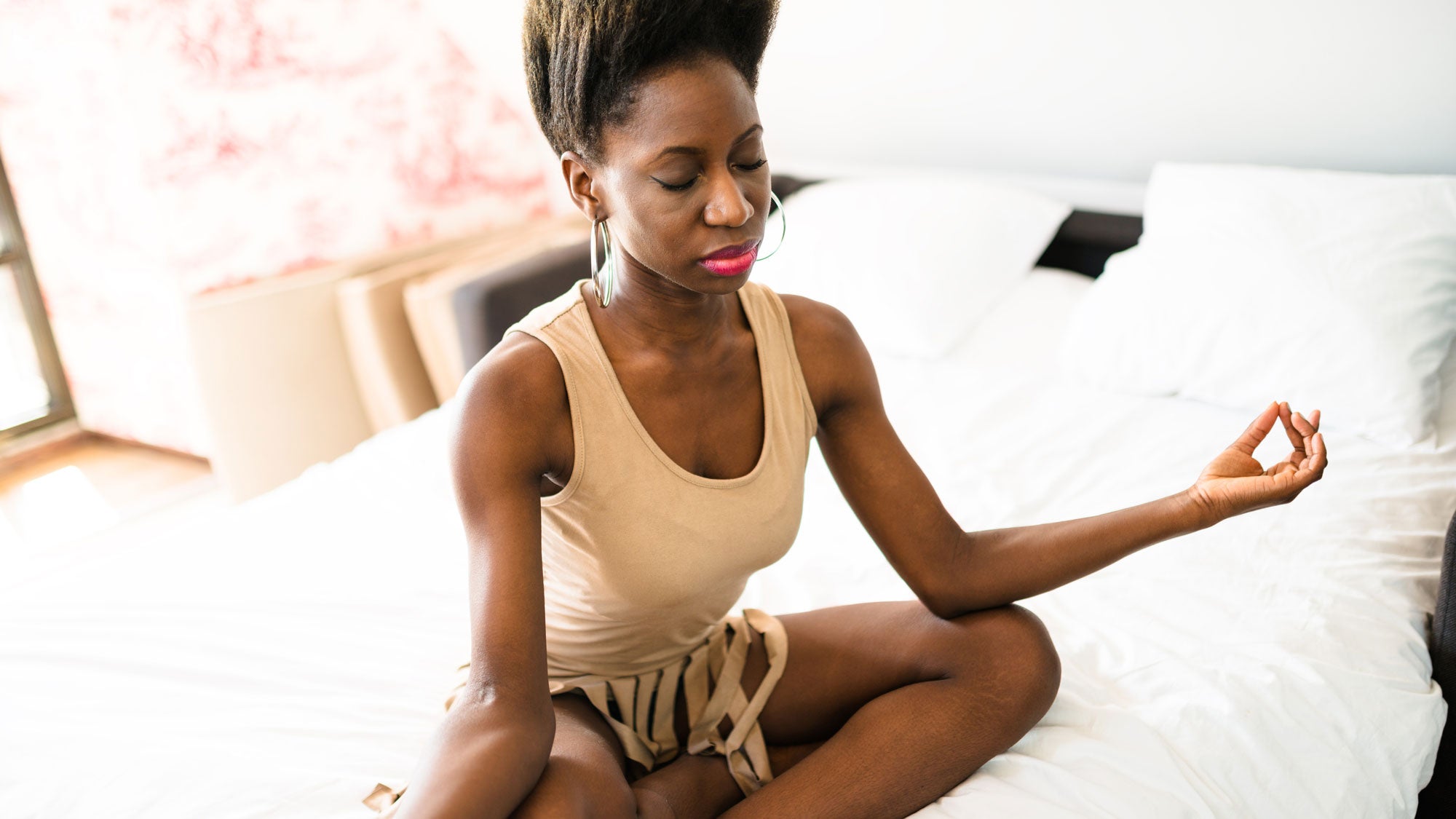
The Future of Bhakti Yoga
Still, it’s a good thing that Westerners are beginning to experiment with bhakti yoga and explore this path to connection with the Divine.
“The Gita opened the door so that anyone can have their own relationship to God,” Pomeda says. Hatha teachers aren’t trained much in bhakti, but Pomeda predicts that, as the American yoga practice deepens, more instructors will discover it within themselves—and bring more bhakti into the practice to teach others. “It’s great,” he says. “We are finally discovering the richness of what yoga has to offer.”
Although this is an ancient tradition, that richness extends beyond the mat and even into the fast pace of modern life.
For Seitz, the bhakti path has changed the way she experiences life. In the frenzy of Manhattan, it has connected her with a community of like-minded yogis who attend ritual ceremonies at the Sivananda center. Her devotional practices help her stay positive and feel gratitude during life’s mundane activities such as eating a meal or riding the subway.
“I guess people maybe think they don’t have time for bhakti yoga,” Seitz says. “People think, ‘OK, I’ve got 5 minutes, enlighten me.’”
But when you do take the time, you might realize that bhakti is just another way to move along on the spiritual path. Echoing the feelings of many, Seitz says simply that it’s a practice she does in the hope of achieving enlightenment one day.
[……]
Read more
